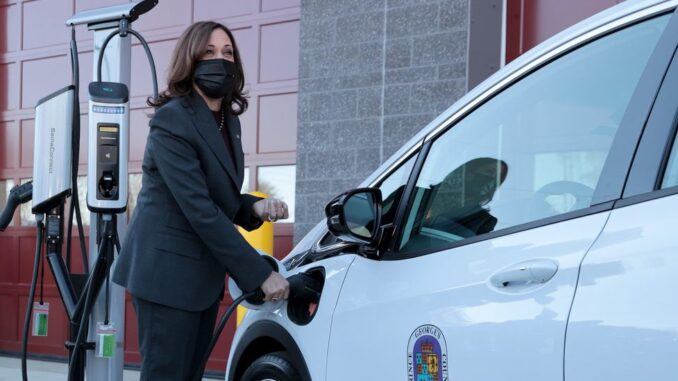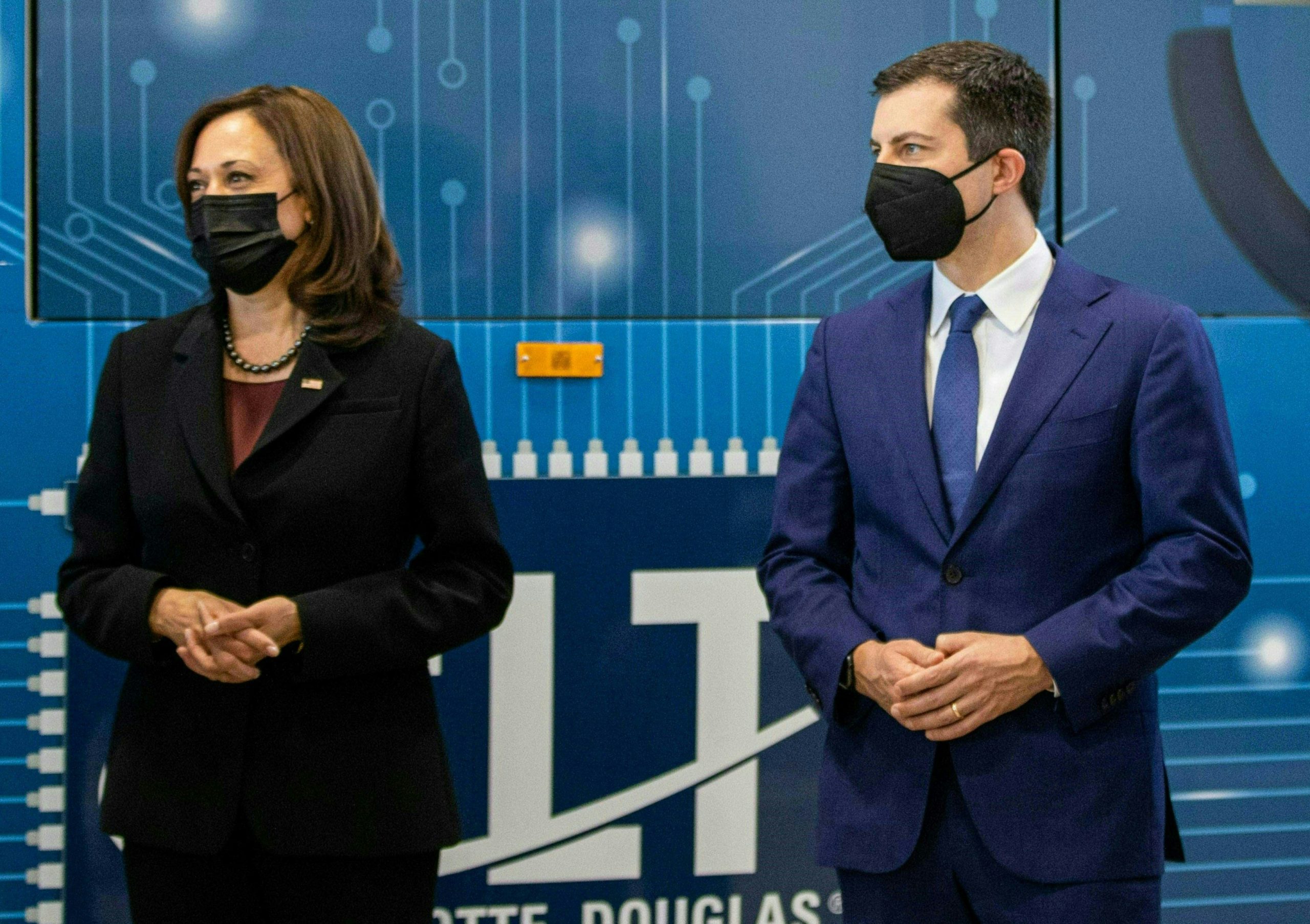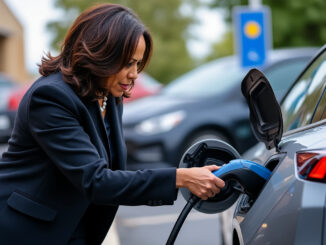
Once the ongoing effort by the legacy media to reinvent presumptive Democratic nominee Kamala Harris as a dynamic leader and competent campaigner passes, we will presumably enter the part of the presidential race in which we actually examine her real record on the key issues.
When — or if — that time ever arrives, the vice president will have a lot to explain where energy policy is concerned.
Last week I provided a high-level overview of some of the radical policies Harris has supported over her time in office in California and Washington, D.C. Today, I will address Harris’s advocacy for electric vehicles and buses, and the expanding bloodbath it has helped to create.
Let’s begin with a speech Harris delivered in Brandywine, Maryland on December 13, 2021. There, Harris spoke to an audience including Energy Secretary Jennifer Granholm, assorted Maryland officeholders, and workers at the Brandywine Highway Maintenance Facility. As part of her remarks, the vice president delivered a ringing endorsement of electric vehicles and her administration’s plans to try to subsidize them into automotive market dominance.
“The pollution from vehicles powered by fossil fuels has long harmed the health of communities around our country,” Harris said. “But there is a solution to this problem, and it is parked right behind me … electric cars, trucks, and buses — they don’t produce tailpipe emissions that irritate the nose and eyes, that decrease lung function, that increase susceptibility to respiratory illness.”
Harris added: “That means manufacturing millions of electric cars, trucks, and buses right here in our country. That means outfitting thousands of EV — electric vehicle — repair garages, just like this one. And it means installing a national network of EV chargers.”
That speech took place after congress had enacted the 2021 Infrastructure Investment and Jobs Act containing more than $200 billion in clean energy subsidies. Congress passed the Orwellian-named Inflation Reduction Act and its $369 billion in similar subsidies eight months later.

US Vice President Kamala Harris (L) and Transportation Secretary Pete Buttigieg tour the electric vehicle operations at Charlotte Area Transit Systems bus garage in Charlotte, North Carolina on December 2, 2020. (Photo by LOGAN CYRUS/AFP via Getty Images)
How has all that worked out for America three years down the road? As I pointed out a few weeks ago, every pure play EV maker in the U.S. is now either in bankruptcy or teetering on the brink. Ford reported last week that its EV division, Ford Model e, lost about $50,000 per unit sold during the second quarter, and that was the best quarterly result the company has reported in over a year. Even Tesla has started the year with a pair of disappointing quarterly results amid rapidly slowing consumer demand for electric vehicles.
The Biden-Harris dreams of subsidizing a national fleet of high-speed EV chargers into existence has also come up a crapper. The Washington Post and others reported in April that Granholm’s Energy Department has invested a whopping $7.5 billion to install 5,000 such charging stations around the country but had only managed to activate 7 to that point.
Harris also endorsed a $5 billion EPA-managed program included in the Infrastructure law to fund the adoption of battery electric buses for targeted school systems around the country. Thus far, EPA has released two tranches of federal grants totaling $1.9 billion, but to disappointing results. Of the 389 school districts targeted by the grants, just 23 have reported successful acquisition of a total of 60 buses that have been placed into service. But another 50 of those districts have since withdrawn from consideration by the program.
“EPA anticipates that transitioning to new technology school buses will take time, which is why the project period is two years with an option to extend where needed and justified,” said EPA spokeswoman Shayla Powell.
Oh.
IRA subsidies for EV city buses have created perhaps the worst set of boondoggles of all. The electric buses are so costly, require such high maintenance and have such limited charging ranges that even extremely liberal cities like Austin, Texas and Jackson, Wyoming have quit trying to change over their fleets. The 2023 bankruptcy of heavily subsidized Proterra, the biggest EV bus maker, hasn’t helped.
It is hard to identify any aspect of the Biden-Harris suite of EV-related policies that can honestly be called a success. As her party’s apparent nominee, Harris will have much to answer for — that is, if the media ever gets around to asking the relevant questions.
Take the Survey at https://survey.energynewsbeat.com/





